Information
sheet on Cockroaches.
ABN 47 091 891 253
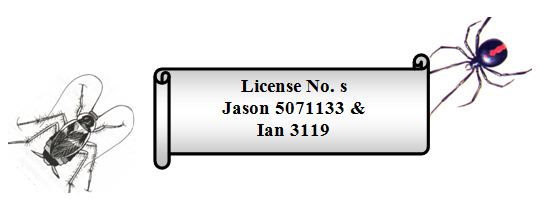
Office Phone: (02) 9631 3585
Jason’s Mobile: 0414 434 958
email: adaptablepc@ozemail.com.au
ABN 47 091 891 253

Office Phone: (02) 9631 3585
Jason’s Mobile: 0414 434 958
email: adaptablepc@ozemail.com.au
This widely known group of ancient insects are much despised, largely owing to the success that a small number of species have had in exploiting environments in which humans live and work.
Of the almost 3500 species of cockroaches that exist some 428 are found in Australia. However, only about six species have become serious pests of homes and industry here.
Being nocturnal creatures, they usually become active after dusk, or when human activity has ceased for the night. They tend to hide by day in cracks, crevices, and the motors and housings of appliances. They can also be itinerant visitors arriving from grease traps, subfloors, or drainage and sewage networks.
Adults are mostly flattened, and viewed from above an oval shape. The head shielded beneath the pronotum. They have long slender threadlike antennae, legs well suited to running, highly developed compound eyes and chewing mouthparts. Some species have wings while others are reduced or absent.
Nymphs or young cockroaches are similar to the adults except in genitalia, color, and texture of the cuticle.
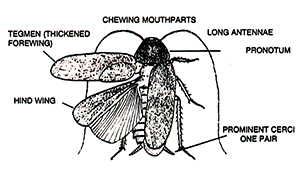
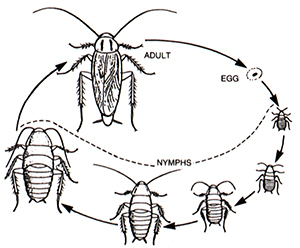
Adults are mostly flattened, and viewed from above an oval shape. The head shielded beneath the pronotum. They have long slender threadlike antennae, legs well suited to running, highly developed compound eyes and chewing mouthparts. Some species have wings while others are reduced or absent.
Nymphs or young cockroaches are similar to the adults except in genitalia, color, and texture of the cuticle.
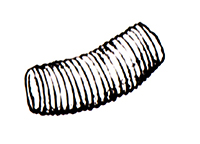
The Oothca: can be dropped or sometimes glued to surfaces by the female prior to hatching.
After hatching nymphs develop through several moults over a period of 2-4 months, but can be longer based on environmental conditions such as food and shelter.
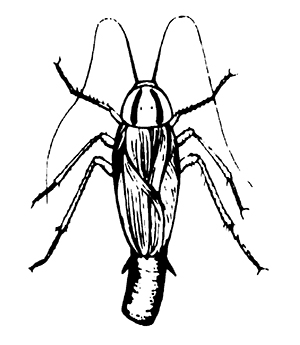
Cockroaches are scavengers who eat virtually any human, animal food or vegetable material, as well as stored foods. They tend to contaminate living or food-handling areas with droppings, skin casts, regurgitation, or abdominal secretions. They are known to carry disease organisms such as bacteria, viral conditions, and protozoa on their cuticle and in the gut. These include Salmonella, tuberculosis, hepatitis, and typhoid fever. As a result infestations are generally regarded as a threat to human health.
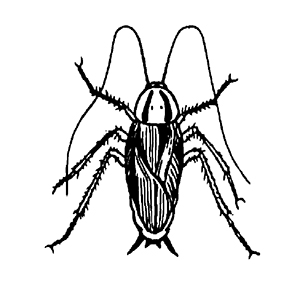
This relatively small cockroach is probably the most widespread species. It is the most prolific breeder of all the cockroaches, taking as little as 40 days to develop from hatching to adulthood. Adults are light amber-brown with two dark longitudinal stripes on the pronotum. Egg Cases (Ootheca) are carried by the female until just before hatching, and contain 30-40 eggs. This cockroach seeks warm moist conditions. It is usually found under sinks, in cupboards, under drawers, around water heaters and appliances like fridge’s, microwaves, and dishwashers. Although it is winged it does not seem to fly preferring to travel by being carried
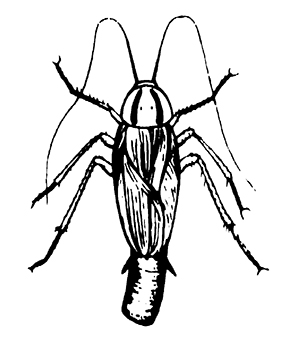
The American cockroach is probably the largest cockroach that infests dwellings. Adults are red-brown with a pale yellow border around the pronotum. Females may produce 50 egg cases in 12 months, these Oothca are usually dropped or glued to surfaces within reasonable proximity to food and water. Up to 16 young nymphs hatch and take 6-12 months to develop to adults. These cockroaches like moist, dark conditions and live in roof and sub floor voids, walls, as well as sewers and drains. They eat decaying organic matter, but will eat bookbinding’s, paper and clothing. They can and will fly.
The Australian cockroach is similar to the American but is a darker brown with the yellow extending to the forewings. It enjoys the warmer climate areas.
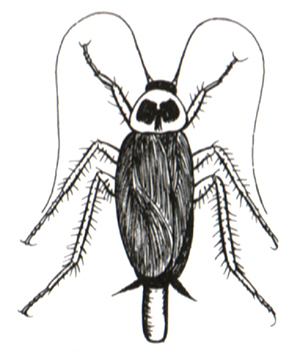
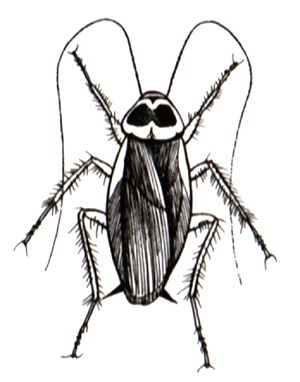
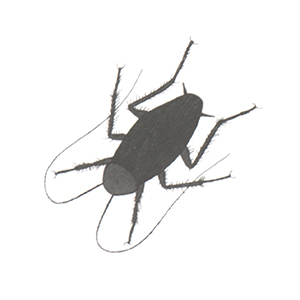
A relatively large cockroach, the adults are dark brown to almost black with no yellow markings. It prefers food of plant origin and is often a pest of green houses, nurseries, and gardens. It is regarded as an outdoor species. It can be found in garages, sheds and some sub floor areas.
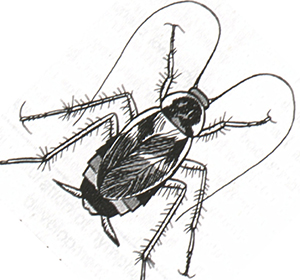
The Brownbanded is relatively small. The adults are pale brown with very pale bands across the thorax and abdomen. It is an indoor pest but as it requires little water is found in areas like wardrobes, cabinets, behind bookshelves or even wallpaper. It is a very active insect and may fly.
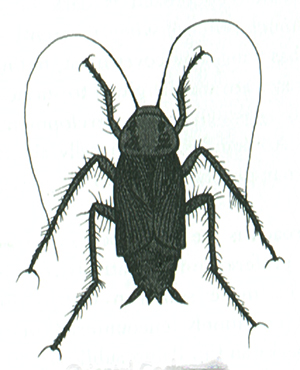
The medium sized oriental is dark brown to black. Its preference for cool conditions is reflected in its more Southern distribution. It is relatively sluggish and is usually located at or below ground level. It likes decaying organic material and lives in rubbish areas.
At ADAPTABLE Pest Control we like to utilize a range of treatment modalities in an integrated approach to the problem. There are Non-chemical approaches using physical and cultural methods as well as chemical alternatives.
Physical methods involve trapping by use of things like sticky boards sometimes utilizing pheromone attractants. Efforts can be taken to sealing, where feasible, cracks and crevices that provide harborages. Closing off entry points such as around pipes through floors or walls.
Cultural control involves altering conditions to make the environment less attractive to the pest. Much of which involves recommendations to customers for things like the repair of leaking taps and pluming that provides water for the cockroach. There is also correct storage in closed containers of rubbish or food items. Along with correct cleaning in areas such as commercial kitchens.
With chemical treatments again there are a number of control options. They will be governed by things like the species, the size of the population, the distribution of the problem, the type of construction of buildings as well as many other factors.
We generally use surface sprays that cockroaches will travel over - that have some residual effect providing ongoing protection - around skirtings and areas that provide harborages. This is complemented by use of chemical dusts applied to areas where wet sprays are problematic, including appliance motors and switchboxes where liquid will cause shorting or fires, as well as areas like roof voids and subfloors that could be hard to access all sections of. We also use insect growth retardants that render insects incapable of mating or reproducing braking breeding cycles and that also enhance longer-term effects. Bait traps can also be employed but mostly as monitors of activity rather than to effective control.
Fill Out The Form Below to get a coupon good for Free Consultation by one of our highly trained Pest Control Techs, or give us a call today at 0414 434 958…